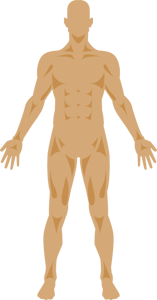 In the quest for achieving the perfect physique, many fitness enthusiasts find themselves wondering about their genetic limits and the time it takes to reach their maximum muscular potential (MMP). Dr. Casey Butt, a Ph.D. and researcher in the field of natural bodybuilding, has delved deep into this subject, analyzing approximately 300 natural bodybuilding champions spanning from 1947 to 2010. His groundbreaking work provides valuable insights into predicting one's potential lean body mass and understanding the timelines for achieving maximum gains. Dr. Casey Butt, has not only provided a foundation for estimating overall lean body mass potential but has also extended to specific muscle groups with comprehensive analysis that incorporates measurements for the neck, chest, bicep flexed, forearm flexed, thigh, and calf, offering a more detailed understanding of individualized growth.
In the quest for achieving the perfect physique, many fitness enthusiasts find themselves wondering about their genetic limits and the time it takes to reach their maximum muscular potential (MMP). Dr. Casey Butt, a Ph.D. and researcher in the field of natural bodybuilding, has delved deep into this subject, analyzing approximately 300 natural bodybuilding champions spanning from 1947 to 2010. His groundbreaking work provides valuable insights into predicting one's potential lean body mass and understanding the timelines for achieving maximum gains. Dr. Casey Butt, has not only provided a foundation for estimating overall lean body mass potential but has also extended to specific muscle groups with comprehensive analysis that incorporates measurements for the neck, chest, bicep flexed, forearm flexed, thigh, and calf, offering a more detailed understanding of individualized growth.
This formula applies to males only.
Determining Lean Body Mass Potential
Casey Butt's formula, regarded as one of the most sophisticated in the realm of natural bodybuilding, considers factors such as height, wrist circumference, and ankle circumference. By examining these measures in individuals at their peak condition, assuming a 10% body fat level, the formula provides a solid understanding of potential lean body mass ranges. This information serves as a foundation for further exploration into the timing aspect of muscle development.
Applying the formula will provide is some insights into your LBM and difference to where you are today.



The difference of lean body mass that is achievable
Your potential weight at current body fat levels
Your final maximum potential numbers, when referring to raw mass (lean body mass) are:



Timing Your Muscle Growth
One of the intriguing aspects of Casey Butt's research is his exploration of the time it takes for individuals to reach their maximum potential. Dr. Butt has devised equations that predict lean body mass potential over a 5 year time frame as you get closer and closer to your final naturally achievable targets. This insight can serve as a roadmap for individuals, helping them set realistic expectations and timelines for their fitness journeys.
Remember, the first year is identified as a critical period, where individuals have the opportunity to achieve the largest proportional gain of total muscle. Understanding and optimizing this timeframe can significantly impact long-term results.
The formula translates into the following annual muscular gains.
| Training Year | Gains For Year | Gains From Total |
|---|---|---|
| Year 1 | 16.88 lbs | 51.61% |
| Year 2 | 8.44 lbs | 25.81% |
| Year 3 | 4.22 lbs | 12.9% |
| Year 4 | 2.11 lbs | 6.45% |
| Year 5 | 1.05 lbs | 3.23% |
| Total | 32.7 lbs | 100% |
Comparing this now to your current lean body mass of 171.0 lbs and the potential lean body mass of 190.51 lbs as defined from the core formula, we can get a better idea of where you are in your training cycle from a timing perspective.
of training completed
Exploring specific Muscle Groups
Besides a strong focus on Lean body mass when evaluating maximum muscular potential, Casey Butt further explored potential of "size" at various measurements to provide further insights into your road ahead. It's essential to note that these predictions assume a body fat level of 10%, providing a realistic and practical approach to estimating muscular potential.
Understanding the estimated potential for specific muscle groups enables individuals to tailor their training programs more effectively. Whether one aims for a sculpted chest, powerful thighs, or well-defined arms, Casey Butt's research offers a roadmap for setting realistic goals and optimizing training strategies.
Considerations for Skeletal Structure
One caveat emphasized by Casey Butt is the impact of skeletal structure on these predictions. Individuals with smaller joints for their frames or unusually long muscle belly lengths may deviate by up to approximately 3%. This underlines the importance of acknowledging individual differences in skeletal structure when assessing muscular potential.
Identifying Hardgainers and Easygainers

 Dr. Butt's research also delves into the concept of "hardgainers" and "easygainers." A hardgainer is someone who experiences slower and more challenging muscle growth than the average trainee. Casey Butt identifies these categories by closely examining the ratio of height to wrist or ankle circumference. This insight allows individuals to understand their unique growth patterns and tailor their training approaches accordingly.
Dr. Butt's research also delves into the concept of "hardgainers" and "easygainers." A hardgainer is someone who experiences slower and more challenging muscle growth than the average trainee. Casey Butt identifies these categories by closely examining the ratio of height to wrist or ankle circumference. This insight allows individuals to understand their unique growth patterns and tailor their training approaches accordingly.
6.5%
Above target, you are NOT considered a hardgainer.
1.08%
Above target, you are NOT considered a hardgainer.
Hardgainers Muscular Potential
| Neck | 17.25" |
| 17.0" | ||||
| Chest Top | 48.52" |
| |||||
| Bicep Flexed | 17.1" |
| |||||
| Forearm Flexed | 13.72" |
| |||||
| Thigh Middle | 25.97" |
| |||||
| Calf | 17.64" |
|
Easygainers Muscular Potential
| Neck | 17.34" |
| 17.0" | ||||
| Chest Top | 49.63" |
| |||||
| Bicep Flexed | 17.8" |
| |||||
| Forearm Flexed | 14.24" |
| |||||
| Thigh Middle | 26.41" |
| |||||
| Calf | 17.7" |
|
Upper Body Muscular Potential: The Role of Wrist Measurements
Wrist Circumference as a Determinant
When examining upper body muscular potential, Casey Butt's formula considers wrist circumference as a key determinant. The ratio of height to wrist circumference helps categorize individuals into either the hardgainer or easygainer group for their upper body. This ratio provides insights into the unique challenges or advantages individuals may face when trying to build muscle in their chest, shoulders, back, and arms.
Understanding Upper Body Growth Patterns
For those with smaller wrist circumferences relative to their height, the formula suggests a potential tendency towards being a hardgainer in the upper body. Conversely, individuals with larger wrist circumferences in proportion to their height may be classified as easygainers for upper body development. This insight allows for a more targeted approach to upper body training based on individualized growth patterns.
Lower Body Muscular Potential: Decoding Ankle Measurements
Ankle Circumference in Lower Body Predictions
Shifting the focus to lower body development, ankle circumference plays a pivotal role in estimating muscular potential. By incorporating ankle measurements along with other variables, Dr. Butt's formula provides a nuanced understanding of an individual's capacity to build muscle in the legs, including the thighs and calves.
Tailoring Training Strategies for Lower Body
Individuals with smaller ankle circumferences relative to their height may find themselves categorized as hardgainers in the lower body. On the other hand, those with larger ankle circumferences may be identified as easygainers for lower body development. This information guides the customization of training programs, helping individuals address specific challenges or capitalize on natural advantages in their lower body muscle-building endeavors.
Integrating Upper and Lower Body Insights
By considering both wrist and ankle measurements, individuals can gain a holistic view of their overall muscular potential. This dual-focus approach allows for a more targeted and effective training strategy that accounts for the unique growth patterns in both the upper and lower body.
Analyzing Skeletal Structure for Muscle Growth Challenges
For those struggling to put on muscle despite dedicated efforts, assessing skeletal structure becomes crucial. By comparing wrist and ankle measurements to their relative targets, individuals can identify whether they fall into the hardgainer category. Understanding whether muscle development is easier in the upper or lower body can further guide training strategies.
Conclusion
Casey Butt's meticulous research has provided the fitness community with a valuable framework for understanding and predicting muscular potential. By incorporating factors such as height, wrist circumference, and ankle circumference, individuals can gain insights into their unique growth patterns and timelines for achieving their fitness goals. In Casey Butt's research, the differentiation between upper and lower body muscular potential is intricately tied to the measurements of the wrist and ankle, respectively. Understanding how these measurements contribute to the identification of hardgainers or easygainers in specific body regions empowers individuals to tailor their training approaches for maximum efficiency. Whether striving for a sculpted upper body or powerful lower body, the insights derived from wrist and ankle measurements guide individuals on their journey to unlock their full muscular potential.
Measurement Help
Wrist
Body Position- Hand generally open (ie not clenched)
- measured on the hand side of the styloid process (The styloid process is the bony lump on the outside of your wrist.)
- Ie between hand and bony part
- It is generally your smallest circumference
Ankle
Body Position- Standing flat with foot touching surface
- Smallest measurement just above your ankle
Neck
How to measure- Smallest measurement just below the adams apple
- Tape measure should be sloping slightly downwards
